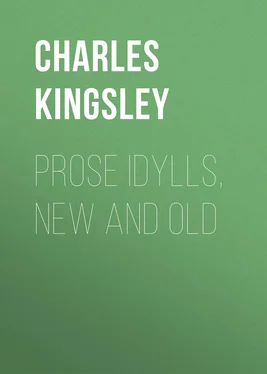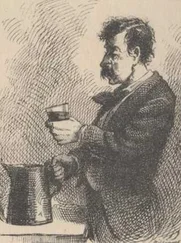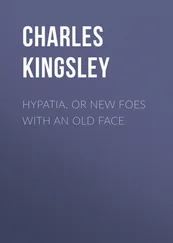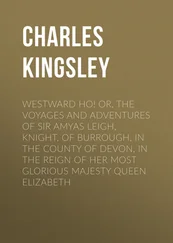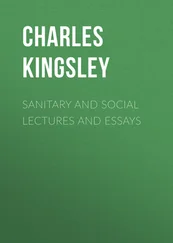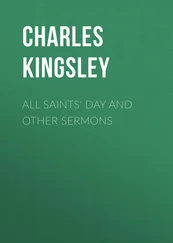Charles Kingsley - Prose Idylls, New and Old
Здесь есть возможность читать онлайн «Charles Kingsley - Prose Idylls, New and Old» — ознакомительный отрывок электронной книги совершенно бесплатно, а после прочтения отрывка купить полную версию. В некоторых случаях можно слушать аудио, скачать через торрент в формате fb2 и присутствует краткое содержание. Жанр: foreign_prose, foreign_antique, на английском языке. Описание произведения, (предисловие) а так же отзывы посетителей доступны на портале библиотеки ЛибКат.
- Название:Prose Idylls, New and Old
- Автор:
- Жанр:
- Год:неизвестен
- ISBN:нет данных
- Рейтинг книги:3 / 5. Голосов: 1
-
Избранное:Добавить в избранное
- Отзывы:
-
Ваша оценка:
- 60
- 1
- 2
- 3
- 4
- 5
Prose Idylls, New and Old: краткое содержание, описание и аннотация
Предлагаем к чтению аннотацию, описание, краткое содержание или предисловие (зависит от того, что написал сам автор книги «Prose Idylls, New and Old»). Если вы не нашли необходимую информацию о книге — напишите в комментариях, мы постараемся отыскать её.
Prose Idylls, New and Old — читать онлайн ознакомительный отрывок
Ниже представлен текст книги, разбитый по страницам. Система сохранения места последней прочитанной страницы, позволяет с удобством читать онлайн бесплатно книгу «Prose Idylls, New and Old», без необходимости каждый раз заново искать на чём Вы остановились. Поставьте закладку, и сможете в любой момент перейти на страницу, на которой закончили чтение.
Интервал:
Закладка:
Two hints more about palmers. They must not be worked on the top of the water, but used as stretchers, and allowed to sink as living caterpillars do; and next, they can hardly be too large or rough, provided that you have skill enough to get them into the water without a splash. I have killed well on Thames with one full three inches long, armed of course with two small hooks. With palmers—and perhaps with all baits—the rule is, the bigger the bait the bigger the fish. A large fish does not care to move except for a good mouthful. The best pike-fisher I know prefers a half-pound chub when he goes after one of his fifteen-pound jack; and the largest pike I ever ran—and lost, alas!—who seemed of any weight above twenty pounds, was hooked on a live white fish of full three-quarters of a pound. Still, no good angler will despise the minute North-country flies. In Yorkshire they are said to kill the large chalk trout of Driffield as well as the small limestone and grit fish of Craven; if so, the gentlemen of the Driffield Club, who are said to think nothing of killing three-pound fish on midge flies and cobweb tackle, must be (as canny Yorkshiremen are likely enough to be) the best anglers in England.
In one spot only in Yorkshire, as far as I know, do our large chalk flies kill: namely, in the lofty limestone tarn of Malham. There palmers, caperers, and rough black flies, of the largest Thames and Kennet sizes, seem the only attractive baits: and for this reason, that they are the flies of the place. The cinnamon Phryganea comes up abundantly from among the stones; and the large peat moss to the west of the tarn abounds, as usual, in house-flies and bluebottles, and in the caterpillars of the fox and oak-egger moths: another proof that the most attractive flies are imitations of the real insects. On the other hand, there are said to be times when midges, and nothing else, will rise fish on some chalk streams. The delicate black hackle which Mr. Stewart praises so highly (and which should always be tied on a square sneck-bend hook) will kill in June and July; and on the Itchen, at Winchester, hardly any flies but small ones are used after the green drake is off. But there is one sad objection against these said midges—what becomes of your fish when hooked on one in a stream full of weeds (as all chalk streams are after June), save
‘One struggle more, and I am free
From pangs which rend my heart in twain’?
Winchester fishers have confessed to me that they lose three good fish out of every four in such cases; and as it seems pretty clear that chalk fish approve of no medium between very large flies and very small ones, I advise the young angler, whose temper is not yet schooled into perfect resignation, to spare his own feelings by fishing with a single large fly—say the governor in the forenoon, the caperer in the evening, regardless of the clearness of the water. I have seen flies large enough for April, raise fish excellently in Test and other clear streams in July and August; and, what is more, drag them up out of the weeds and into the landing-net, where midges would have lost them in the first scuffle.
So much for our leading chalk flies; all copies of live insects. Of the entomology of mountain streams little as yet is known: but a few scattered hints may suffice to show that in them, as well as in the chalk rivers, a little natural science might help the angler.
The well-known fact that smaller flies are required on the moors than in the lowlands, is easily explained by the fact that poorer soils and swifter streams produce smaller insects. The large Phryganeæ, or true caperers, whose caddis-baits love still pools and stagnant ditches, are there rare; and the office of water-scavenger is fulfilled by the Rhyacophiles (torrent-lovers) and Hydropsyches, whose tiny pebble-houses are fixed to the stones to resist the violence of the summer floods. In and out of them the tiny larva runs to find food, making in addition, in some species, galleries of earth along the surface of the stones, in which he takes his walks abroad in full security. In any of the brown rivulets of Windsor forest, towards the middle of summer, the pebble-houses of these little creatures may be seen in millions, studding every stone. To the Hydropsyches (species montana ? or variegata ? of Pictet) belongs that curious little Welsh fly, known in Snowdon by the name of the Gwynnant, whose tesselated wing is best imitated by brown mallard feather, and who so swarms in the lower lakes of Snowdon, that it is often necessary to use three of them on the line at once, all other flies being useless. It is perhaps the abundance of these tesselated Hydropsyches which makes the mallard wing the most useful in mountain districts, as the abundance of the fawn and grey Phryganidæ in the south of England makes the woodcock wing justly the favourite. The Rhyacophiles, on the other hand, are mostly of a shining soot-grey, or almost black. These may be seen buzzing in hundreds over the pools on a wet evening, and with them the sooty Mystacides, called silverhorns in Scotland, from their antennæ, which are of preposterous length, and ringed prettily enough with black and white. These delicate fairies make moveable cases, or rather pipes, of the finest sand, generally curved, and resembling in shape the Dentalium shell. Guarded by these, they hang in myriads on the smooth ledges of rock, where the water runs gently a few inches deep. These are abundant everywhere: but I never saw so many of them as in the exquisite Cother brook, near Middleham, in Yorkshire. In that delicious glen, while wading up beneath the ash-fringed crags of limestone, out of which the great ring ouzel (too wild, it seemed, to be afraid of man) hopped down fearlessly to feed upon the strand, or past flower-banks where the golden globe-flower, and the great blue geranium, and the giant campanula bloomed beneath the white tassels of the bird-cherry, I could not tread upon the limestone slabs without crushing at every step hundreds of the delicate Mystacide tubes, which literally paved the shallow edge of the stream, and which would have been metamorphosed in due time into small sooty moth-like fairies, best represented, I should say, by the soft black-hackle which Mr. Stewart recommends as the most deadly of North-country flies. Not to these, however, but to the Phryganeæ (who, when sticks and pebbles fail, often make their tubes of sand, e.g. P. flava ), should I refer the red-cow fly, which is almost the only autumn killer in the Dartmoor streams. A red cowhair body and a woodcock wing is his type, and let those who want West-country trout remember him.
Another fly, common on some rocky streams, but more scarce in the chalk, is the ‘Yellow Sally,’ which entomologists, with truer appreciation of its colour, call Chrysoperla viridis . It may be bought at the shops; at least a yellow something of that name, but bearing no more resemblance to the delicate yellow-green natural fly, with its warm grey wings, than a Pre-Raphaelite portrait to the human being for whom it is meant. Copied, like most trout flies, from some traditional copy by the hands of Cockney maidens, who never saw a fly in their lives, the mistake of a mistake, a sham raised to its tenth power, it stands a signal proof that anglers will never get good flies till they learn a little entomology themselves, and then teach it to the tackle makers. But if it cannot be bought, it can at least be made; and I should advise everyone who fishes rocky streams in May and June, to dye for himself some hackles of a brilliant greenish-yellow, and in the most burning sunshine, when fish seem inclined to rise at no fly whatsoever, examine the boulders for the Chrysoperla, who runs over them, her wings laid flat on her back, her yellow legs moving as rapidly as a forest-fly’s; try to imitate her, and use her on the stream, or on the nearest lake. Certain it is that in Snowdon this fly and the Gwynnant Hydropsyche will fill a creel in the most burning north-easter, when all other flies are useless; a sufficient disproof of the Scotch theory—that fish do not prefer the fly which is on the water. 3 3 The Ripon list of natural flies contains several other species of small Nemouridæ unknown to me, save one brown one, which is seen in the South, though rarely, in June.
Интервал:
Закладка:
Похожие книги на «Prose Idylls, New and Old»
Представляем Вашему вниманию похожие книги на «Prose Idylls, New and Old» списком для выбора. Мы отобрали схожую по названию и смыслу литературу в надежде предоставить читателям больше вариантов отыскать новые, интересные, ещё непрочитанные произведения.
Обсуждение, отзывы о книге «Prose Idylls, New and Old» и просто собственные мнения читателей. Оставьте ваши комментарии, напишите, что Вы думаете о произведении, его смысле или главных героях. Укажите что конкретно понравилось, а что нет, и почему Вы так считаете.
